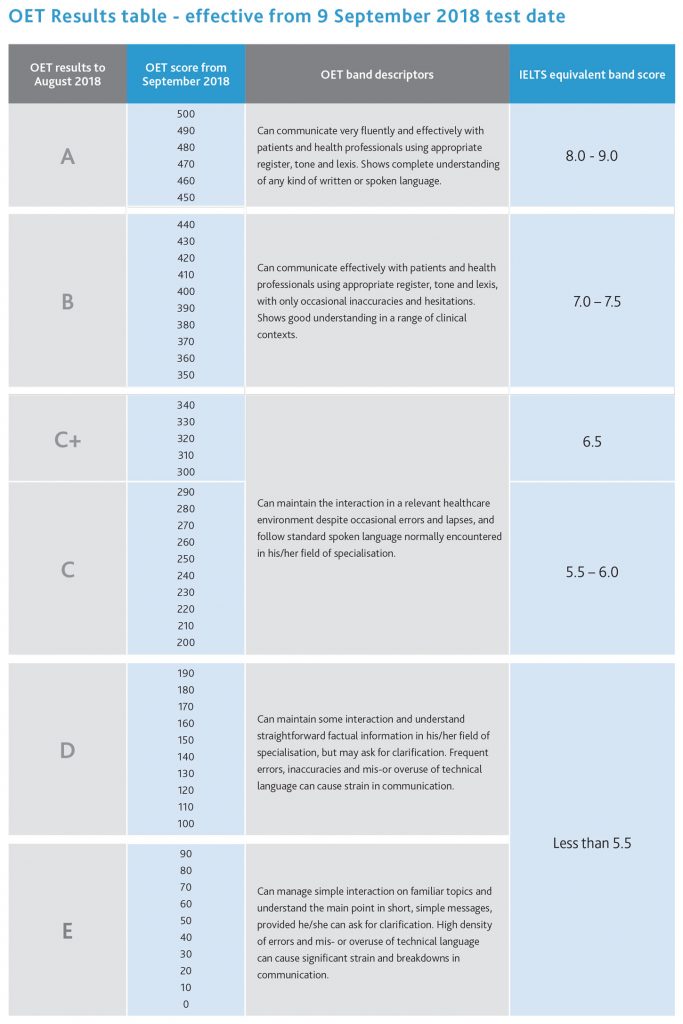OET is a well-respected international English language test for the healthcare sector. Established in the late 1980s under contract to the Australian Federal Government, OET continues to remain relevant through continuous research and validation.
Since 2013 OET has been owned by Cambridge Box Hill Language Assessment, a venture between Cambridge Assessment English and Box Hill Institute. Box Hill Institute is a leading Australian vocational and higher education provider, active both in Australia and overseas.
Healthcare professionals
If you want to work or study in healthcare in the UK, Ireland, Australia, New Zealand, Ukraine, Dubai, Singapore or Namibia, you need OET. By taking OET you will prove you have the right level of English plus you’ll be learning the kind of language you will need every day at work.
Healthcare professionals choose OET because:
- OET uses real healthcare scenariosso you’ll feel more confident on test day.
- OET is widely recognisedas proof of English proficiency for registration, study and work in the healthcare sector, as well as for visas in some countries.
- OET helps you develop language skills for success in your career.
- It’s easy to prepare for the test using the OET Preparation Portal.
Candidates receive a Statement of Results which shows their score for each of the four sub-tests, on a scale from 0 to 500. Each of the four sub-tests is assessed in a specific way.
{loadmodule mod_random_image,call to action subscribe in articles}
Listening and Reading
Answer booklets for Listening Part A and for Reading Part A are marked by trained OET Assessors. These answer booklets are assigned to OET Assessors at random to avoid any conflict of interest. Answer booklets for Reading and Listening Parts B and C are computer scanned and automatically scored.
Listening and Reading Assessors use a detailed marking guide which sets out which answers receive marks and how the marks are counted. Assessors use this guide to decide for each question whether candidates have provided enough correct information to be given the mark or marks available. Assessors are monitored for accuracy and consistency, and candidates’ Part A answers are marked by at least two different assessors.

Writing and Speaking
Candidates’performances on the Writing and Speaking sub-tests are each rated by at least two trained Assessors. Audio files and scripts are assigned to Assessors at random to avoid any conflict of interest.
Writing and Speaking Assessors are monitored for accuracy and consistency, and the scores they award are adjusted to take into account any leniency or severity. If two Assessors award different scores to a candidate’s performance, script and/or audio file will be referred to at least one other senior Assessor not previously involved in the assessment.
For the Writing sub-test, each Assessor scores candidates’ performance according to six criteria: Purpose, Content, Conciseness & Clarity, Genre & Style, Organisation & Layout, and Language. The six criteria are assessed on a scale from 0 to 6 and are equally weighted. A score of 350 for Writing requires a high level of performance on all six criteria.
For the Speaking sub-test, each Assessor scores candidates’ performance according to nine criteria. The four linguistically-oriented criteria are Intelligibility, Fluency, Appropriateness of Language, and Resources of Grammar and Expression. They are assessed on a scale from 0 to 6. Clinical communication criteria include Indicators of Relationship Building, Indicators of Understanding & Incorporating the Patient’s Perspective, Indicators of Providing Structure, Indicators for Information Gathering and Indicators for Information Giving. They are assessed on a scale from 0 to 3. A high level of performance on all nine criteria is required in order to achieve a score of 350 on the speaking test.
